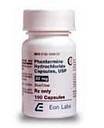|
Hamilton depressed mood item, and the Clinical Global Impression (CGI)-Severity of Illness. PAXIL was significantly better than placebo in improvement of the HDRS sub-factor scores, including the depressed mood item, sleep disturbance factor, and anxiety factor. A study of outpatients with major depressive disorder who had responded to PAXIL (HDRS total score <8) during an initial 8-week open-treatment phase and were then randomized to continuation on PAXIL or placebo for 1 year demonstrated a significantly lower relapse rate for patients taking PAXIL (15%) compared to those on placebo (39%). Effectiveness was similar for male and female patients. Obsessive Compulsive Disorder: The effectiveness of PAXIL in the treatment of obsessive compulsive disorder (OCD) was demonstrated in two 12-week multicenter placebo-controlled studies of adult outpatients (Studies 1 and 2). Patients in all studies had moderate to severe OCD (DSM-IIIR) with mean baseline ratings on the Yale Brown Obsessive Compulsive Scale (YBOCS) total score ranging from 23 to 26. Study 1, a dose-range finding study where patients were treated with fixed doses of 20, 40, or 60 mg of paroxetine day demonstrated that daily doses of paroxetine 40 and 60 mg are effective in the treatment of OCD. Patients receiving doses of 40 and 60 mg paroxetine experienced a mean reduction of approximately 6 and 7 points, respectively, on the YBOCS total score which was significantly greater than the approximate 4-point reduction at 20 mg and a 3-point reduction in the placebo-treated patients. Study 2 was a flexible-dose study
| Withdrawal from paxil | Paxil and alcohol | Paxil medication | Off paxil | Side effects from paxil | Paxil and wellbutrin | Paxil overdose | [ Phentermine ]
|



